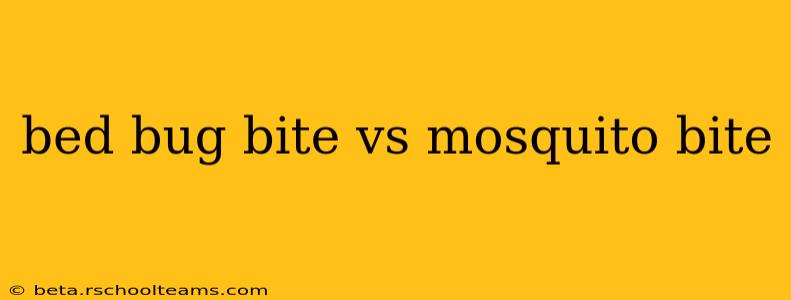Summer nights often bring unwanted guests: mosquitoes and bed bugs. While both leave itchy welts, distinguishing between bed bug bites and mosquito bites is crucial for effective treatment and preventing infestations. This guide will help you identify the key differences and take appropriate action.
Visual Differences: Bed Bug Bites vs. Mosquito Bites
The most immediate way to differentiate is by examining the bite marks themselves. While individual reactions vary, some common patterns emerge:
Mosquito Bites:
- Appearance: Typically appear as single, small, red bumps. They are often less inflamed than bed bug bites.
- Location: Mosquito bites can appear anywhere on exposed skin.
- Pattern: Randomly scattered, not clustered in lines or groups.
- Itchiness: Generally itchy, but the intensity varies depending on individual sensitivity.
Bed Bug Bites:
- Appearance: Often appear as a series of red, itchy welts, sometimes forming a line or cluster. They can be raised and inflamed.
- Location: Predominantly found on exposed skin while sleeping, often in lines or clusters on arms, legs, neck, and shoulders. Bites are rarely found on the scalp or face.
- Pattern: Often arranged in a zig-zag or linear pattern, reflecting the bed bug's feeding habits. This is a key distinguishing factor.
- Itchiness: Can be intensely itchy, often causing significant discomfort.
Beyond the Bite: Other Identifying Factors
Visual inspection alone isn't always conclusive. Consider these additional factors:
- Time of Day: Mosquitoes are most active at dawn and dusk, while bed bugs typically feed at night while you sleep. Observing the time of the bites can provide a clue.
- Bite Location: The location of bites can also be indicative. Mosquito bites are more widespread, whereas bed bug bites are usually concentrated on exposed skin during sleep.
- Presence of Bugs: Finding small, reddish-brown insects near your bed, in bedding, or in cracks and crevices is a strong indication of a bed bug infestation. Mosquitoes are usually not found indoors in large numbers.
- Symptoms: While both bites cause itching, bed bug bites can sometimes lead to secondary skin infections due to scratching. If you experience a severe reaction or infection, consult a doctor.
What to Do if You Suspect Bed Bugs:
If you suspect a bed bug infestation, don't panic. Take immediate action:
- Inspect your bedding and mattress carefully: Look for the insects themselves, their fecal spots (tiny dark spots), or eggs.
- Check your bedroom for signs of infestation: Look in cracks and crevices in walls, furniture, and bedding.
- Contact a pest control professional: Bed bug infestations are difficult to eliminate on your own. A professional can provide effective treatment and prevent future infestations.
Conclusion:
Differentiating between bed bug bites and mosquito bites relies on observation and careful consideration of several factors. While mosquito bites are typically solitary and randomly distributed, bed bug bites usually appear in clusters or lines, often on exposed skin while sleeping. If you suspect bed bugs, prompt action is crucial to prevent a larger infestation. Consulting with a pest control professional will ensure effective treatment and peace of mind.
